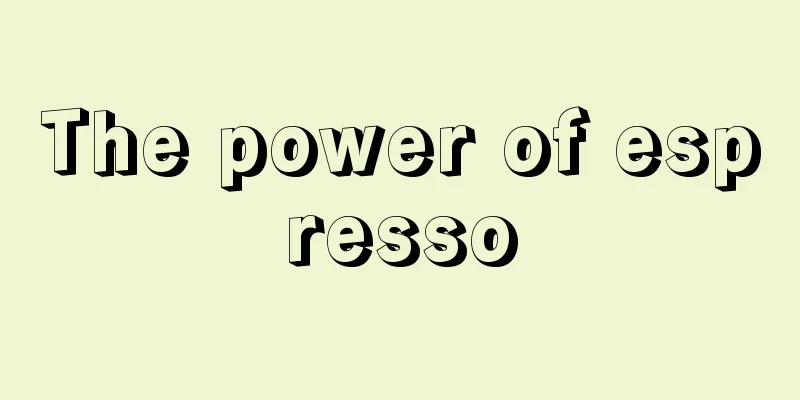How to brew good coffee? 5 secrets to successful brewing

|
Do you want to make yourself a cup of good coffee, but often get stuck in the different equipment recommendations and introductions on the Internet? In fact, good coffee is not that hard to come by. Mastering some basic knowledge and operations can make your coffee taste completely different from before. Here are 5 tips on how to make a good cup of coffee! Is it necessary to buy professional and expensive equipment to brew coffee? It doesn't matter whether you plan to make coffee at home or make it professionally in a cafe. Professional equipment can make terrible coffee, and amateur equipment can also make very good coffee. It is not recommended to buy those super professional but also super expensive machines, because without enough fine raw materials and enough skilled operating techniques, professional equipment can only improve the quality of your cup of coffee very limitedly. Of course, don't choose some overly cheap toy machines or street stalls. If the service life is not long, the cost performance is actually very low. The main difference between coffee machines of different prices (including professional commercial coffee machines and home coffee machines) lies in the quality of the parts and the design of the details. There is basically no difference in function (even if you have one, you may not be able to use it). So in a word, you should eat according to your own taste. Fortunately, if you are making hand-brewed coffee, the equipment used at home and in a professional coffee shop can be quite similar, so we don’t need to worry about too many differences in equipment. 1. Coffee beans. Make sure your coffee beans are fresh and of high quality. Also, try to learn more about the beans: what variety, where does it come from, how is it processed? Where does it come from? Is it a blend, single origin or estate coffee? 100% Arabica or does it have some Robusta in it? What are the sub-varieties? Where is it grown and harvested? Processing method: natural sun drying? double washing? anaerobic fermentation? honey processing? wet hulling? ...? With so many different methods, there are naturally so many different flavor types! Organic production? The impact of fertilizers and pesticides on crops is very simple: organic farming means cleaner and healthier. What about coffee from sustainable sources? Will there be a unique taste of "socially sustainable coffee"? Of course! No... These organic, environmentally friendly, and sustainable labels are more about bringing you a kind of "moral" satisfaction and pleasure, and have nothing to do with the quality of coffee. Roasting technique and roasting degree - is a technique that uses time and temperature to fully display the flavor of coffee. Roasting has a huge effect on the flavor of coffee. The taste is like a treasure locked in the coffee beans, which can only be revealed bit by bit through the Menard reaction and caramelization reaction. Packaging: There are many different packaging materials, different sealing types and venting solutions for roasted coffee beans. It is also important to remember to store the coffee beans in the original packaging, even if you change to other sealed containers, and place them in a cool, dry and dark corner. 2. Water quality and temperature Water plays a huge role in a cup of coffee. Fresh, clean drinking water is the basic requirement. For more advanced quality requirements, we also need to evaluate whether there are any substances in the brewing water that have a negative impact on the coffee, whether the minerals are balanced, and whether adjustments need to be made... According to the Specialty Coffee Association (SCA), the water temperature for brewing coffee should be between 90-96 degrees Celsius (well... basically excluding medium-dark roasts and above). Of course, different coffee beans are suitable for different water temperature parameters, so you might as well experiment more around this range to see which value is more suitable for brewing! 3. Powder to water ratio The coffee powder to water ratio determines how much coffee powder and water we will use to brew coffee. According to the SCA's recommendation, the best coffee powder to water ratio should be "55g coffee powder/1000ml hot water ± 10%". A simple conversion is 1:20. In many people's minds, the concentration of coffee is sometimes confused with the richness of the coffee flavor. However, the concentration represents the amount of soluble matter in the brewed coffee, while the antonym of rich should be refreshing and bland. 4. Extraction Extraction, in simple terms, means: dissolving the flavor molecules hidden in the coffee powder into the water. But not all brewing methods have the same extraction rate and degree. We need to consider the following factors: Grinding degree: The coarseness is selected according to different brewing methods and equipment, which is mainly related to the brewing time. Extraction method: drip, immersion or pressure extraction? Equipment: Americano, Aeropress, Chemex, syphon, French press, Hario V60 and similar espresso machines… Filter type: If using filter paper or cloth, remember to rinse it well! When brewing hand-poured coffee, it is easiest to control the steaming process. We can use the steaming process to remove excess carbon dioxide from the coffee powder and adjust the coffee powder layer for the subsequent brewing and extraction. If we want to increase the extraction rate, we can add stirring. By stirring, the coffee powder and water can be rubbed and flowed, and the extraction is faster. 5. Cleaning Equipment There is no need to say much about cleaning equipment and utensils. We all know how dirty coffee stains are and how bad bad coffee tastes: dull, greasy, burnt and bitter, it can ruin our next beautiful day at any time! You can use a brush and clean water to clean it daily, but remember to use a detergent to remove scale and stains regularly. Bonus tip: Fresh coffee = best coffee. Coffee does not need to be brewed an hour in advance and put into the decanter. Believe me, no one likes to drink fully oxidized coffee. Especially for those coffee machines with built-in heat preservation function, you must be careful about your coffee. Long-term warm will bring you oily taste, sharp acidity, bland aroma, and obvious bitterness and dryness. Always maintain consistent brewing parameters and techniques! No matter which brewing method you use, if you find the perfect ratio and parameters, keep the same brewing parameters and techniques for a period of time. Because if you change one parameter, the final taste will definitely change. If you want to try other brewing effects, then stick to "only change one parameter at a time." For example, if you want to change the powder-water ratio, don't change the steaming time at the same time. Disclaimer: Some of the pictures in this article are from the Internet. For some of the content on the website, such as pictures, we will respect the copyright of the original work and indicate the source, but due to the large number of pictures, some pictures and texts may not be indicated in time, please forgive me. If the original author has any disputes, please contact the website to deal with it. Once verified, we will correct it immediately. It is edited by "Coffee Workshop". Please indicate the source when reprinting. This article is intended to spread coffee culture. If there is any infringement, please inform us to delete it. Thank you~! |
<<: There are four reasons why you can’t make good hand-brewed coffee
>>: Practical tips for hand brewed coffee
Recommend
Espresso, toxic or a weight loss aid?
There is constant controversy over espresso. Some...
Can I brew the coffee beans right after they are ground?
Chemical and physical changes in ground coffee be...
The Art and Technique of Latte Art
Latte art is a kind of coffee art, which uses ing...
Revealed: the exclusive ratio of coffee and milk powder will awaken your taste buds!
This article reveals the secret of the unique cof...
Coffee and Fertility: The Truth Revealed
Coffee and Fertility: The Truth Revealed Coffee i...
The secret of coffee: brewing a cup of strong and thick coffee
The secret of coffee is how to brew a cup of stro...
Black coffee: pros and cons, are you drinking it right?
Black coffee has both advantages and disadvantage...
Ketogenic coffee, is it a blessing or a hidden danger?
Ketogenic coffee has attracted much attention in ...
Round coffee, unique usage and long-lasting effect
Yuanqi coffee has attracted much attention for it...
Shanghai specialty coffee shops, places you can't miss
Shanghai's specialty cafes: exploring the cit...
Where does Delonghi coffee beans rank?
Where does Delonghi coffee beans rank? Delonghi c...
Blue Bottle Coffee Beans: The Perfect Choice for Taste and Mouth
Blue Bottle Coffee Beans: The Perfect Choice for ...
Shanghai coffee shop ranking: Top 10 most popular coffee shops
Shanghai coffee shop ranking: Top 10 most popular...
Coffee beans become coffee powder: a new way to make delicious and mellow coffee
Coffee beans become coffee powder: a new way to m...
The truth about coffee's anti-cancer effects, eight major effects and nine groups of people who are not suitable for it
Abstract: Whether coffee is anti-cancer is still ...









